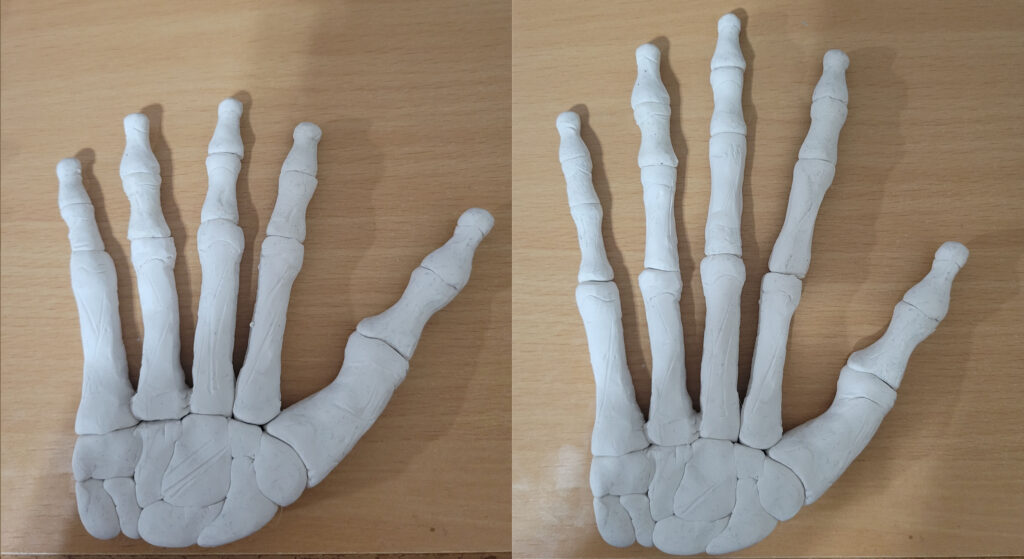
For my project, I looked into the hand condition symbrachydactyly. It is a congenital condition where some or all of the fingers are either underdeveloped, or not developed at all. There is no known cause to this condition, but there are several different methods of treatments to improve the function of the hand. I created a clay model of the bones in your hand, the right side being the skeleton model of an intact hand, and the left of a hand with the short finger type of symbrachydactylyl, which is the most common type.

When a baby begins to form, their hands are shaped like mittens. As the baby grows, the hand divides and fingers form. For babies with symbrachydactyly, the fingers — generally on one hand only – don’t fully form, and the condition is characterized by finger bones that may be smaller than normal, completely absent, webbed, or joined. Elements of nail plate, bone, and cartilage may also be missing, and the muscles, nerves, tendons, ligaments, and bones of the hand are frequently also affected. Symbrachydactyly usually only occurs in one hand, most commonly the left hand. Symbrachydactyly is a congenital condition, but there is no evidence that it is inherited from the parents; rather the cause is thought to be a disruption during prenatal development. The condition is rare and affects about one out of every 32,000 babies, and is effects boys and girls equally. There are three levels of symbrachydactyly; in the first, most common and least severe (shown in the project above) the thumb is essentially normal, but the remaining fingers are short and stiff and can be webbed. In the second level, only the thumb or the thumb and little finger are present (moderately severe). In the third level and most severe level of symbrachydactyly all the fingers are missing, and small skin stumps (nubbins) are located where fingers should have developed. Many forms of symbrachydactyly are treated surgically, with the initial corrective surgery is occurring when child is between 6 and 18 months old, with follow-up surgeries potentially required depending on the severity of the case. In some cases, no surgery or only minor skin and soft-tissue corrections are needed.